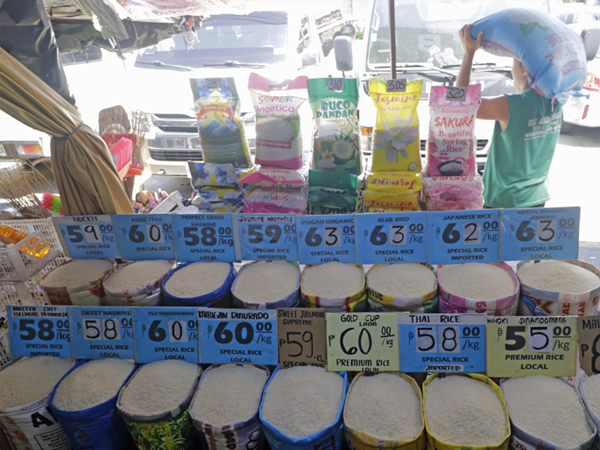 THE Department of Agriculture (DA) hopes that the reduction of rice tariff to 15 percent would drive down retail prices of the country’s staple, but a large farmers group called it a “death blow” to the country’s rice farmers.
THE Department of Agriculture (DA) hopes that the reduction of rice tariff to 15 percent would drive down retail prices of the country’s staple, but a large farmers group called it a “death blow” to the country’s rice farmers.
“We will do everything within our power, especially those granted to the DA under the Price Act, to make sure the substantial cut in rice tariff will translate to a significant reduction in retail price of the grain,” Agriculture Secretary Francisco Tiu Laurel Jr. said in a statement on Wednesday.
Citing the Philippine Statistics Authority (PSA), the DA said the PSA estimates a potential price reduction between P6 and P7 per kilo of rice, the high price of which has kept inflation elevated.
It added that the PSA sees rice accounting for 1.7 percentage points in the May headline inflation of 3.9 percent, while the staple would contribute 3.7 percentage points to the 5.3 percent inflation for the bottom 30 percent income household.
The agriculture chief said the DA plans to fill through the agency’s budget the potential shortfall in the funding for the Rice Competitive Enhancement Fund (RCEF) which allocates P10 billion for farm mechanization, provision better seeds, funding for technology enhancement and farmer training, and other financial support.
“Our priority is to ensure that our rice farmers will continue to benefit from the Rice Fund created under the Rice Tariffication Law [RTL], and is confident will be extended until 2030 to improve the lives of millions of impoverished rice farmers,” Laurel said.
Socioeconomic Planning Secretary Arsenio Balisacan said in a press briefing in Malacañang on Tuesday that the government would provide other services to farmers, who would be affected by the lower RCEF, to bolster their productivity.
Meanwhile, Laurel said the department would also seek Congress’ support for a bigger budget for fertilizer subsidy and financial backing for the National Food Authority [NFA] to maintain a reasonable buying price for palay to ensure that “rice farmers make a profit from their hard work.”
The NFA earlier noted that it would need over P16 billion next year to fund the procurement of palay from local farms and build additional storage and drying facilities to improve its buffer stocking capacity.
Laurel said the NFA and the National Irrigation Administration (NIA) would also be encouraged to continue with their contract growing projects to create a good market for rice farmers willing to join the program.
FFF: Tariff cuts a ’death blow’
THE government’s optimism is in contrast to the outlook of the Federation of Free Farmers (FFF), which said the reduction in rice tariffs is a “death blow” to the country’s rice farmers.
“The Neda board’s decision to reduce rice tariffs from 35 to 15 percent is a stab in the back of, and very likely the death blow against, the country’s 3 million rice farmers and the rice industry as a whole,” the FFF said in a statement.
According to Balisacan, the government’s move aims to lower the price of rice further and make it more affordable for consumers.
The government expects the tariff reduction to stabilize rice prices in the next four years and tone down inflation.
For the farmers group, however, the agency’s decision “deprived” industry stakeholders of their right to genuine consultation and due process.
“Normally, proposed tariff changes undergo hearings conducted by the Tariff Commission. Recommendations are then given to the Neda board. This procedure was not followed before the lowering of the rice tariff,” the FFF said.
The group said the Executive Branch assured rice farmers that rice and other sensitive agricultural commodities would not suffer any diminution in tariff protection for the duration of the agreement during the 2023 Senate hearings on the ratification of the Regional Comprehensive Economic Partnership (RCEP) trade treaty.
“That honorable commitment has been rendered worthless by the Neda Board,” it added. The FFF said their experience since trading in the rice industry was liberalized under the Rice Tariffication Law (RTL) and the reduction of tariffs on non-ASEAN rice imports “has not been salutary.”
“Our dependence on imports from the volatile world market has grown from 10 percent of total domestic consumption to around 25 percent. Rice retail prices have risen,” the group said.
“That the 15 percent tariff on rice will provide major and lasting relief to consumers is more a shot in the dark than a probable result. Meanwhile, the impact of Neda’s decision on the morale and productive efforts of our rice farmers will be hugely discouraging.”














© Copyright 2025 The SSResource Media.
All rights reserved.